[Death-camas: The Genus Toxicoscordion in the Columbia River
Gorge of Oregon and Washington]
Common Death Camas, Deadly Zigadenus, Meadow Death Camas
Toxicoscordion venenosum
Synonyms: Toxicoscordion gramineum, Zigadenus gramineus, Zigadenus intermedius, Zigadenus
venenosus, Zigadenus
venenosus var. gramineus, Zigadenus
venenosus var. venenosus
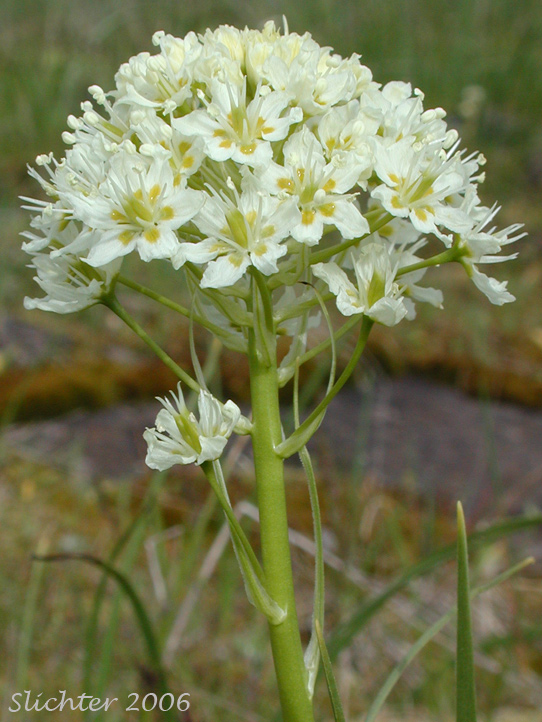
Meadow death camas at Catherine Creek, Columbia River Gorge..........April
9, 2006. Note the single flowers arising from the scape, which helps
identify this species.
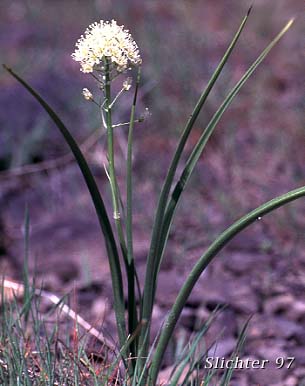 Photo at right of Zigadenus
venenosus var. venenosus at Catherine Creek, Columbia River Gorge.....April 27, 1997.
Photo at right of Zigadenus
venenosus var. venenosus at Catherine Creek, Columbia River Gorge.....April 27, 1997.
Characteristics:
Meadow death camas is a beautiful but deadly lily. It consists
of a single stem arising to 50 cm from a ovoid bulb (2-3 cm long). The leaves
are basal, linear in shape with parallel venation, and may range in length from
10 to 40 cm long. The leaves are keeled, and may be somewhat V-shaped in cross-section,
especially near the base.
The inflorescence is a primarily a short raceme, rarely longer
than 15 to 20 cm. The pedicels are strongly ascending. The flowers consist of
six unequal tepals, all of which are separate. These are no longer than 5 mm
long.
To identify this plant from the similar Zigadenus
paniculatus, meadow death camas has the shorter inflorescence, and where
the inflorescence may be of similar length, meadow death camas has single flowers
arising from the stem (see photos), while panicled death camas has clusters
of flowers arising from the stem, especially in its lower inflorescence.
As mentioned above, this plant is deadly to ingest. It is sometimes
found interspersed with the edible camas, and native tribes often removed it
from the camas beds while both were in bloom, as the bulbs of both are similar.
Habitat:
A widespread species, meadow death camas may be found on coastal
"prairies" and on the grassy bluffs above the sea to the more arid prairie hillsides,
sagebrush slopes and into montane forest openings.
Range:
Meadow death camas is found from southern British Columbia to
Alberta and southwestern Saskatchewan in the north, south along both sides of
the Cascades to Baja California, and east to the Great Plains of North and South
Dakota, Nebraska, and Colorado.
In the Columbia River Gorge, it may be found between the elevations
of 100'-2500' from adjacent to Crown Point in the west to near Horsethief Butte
in the east.
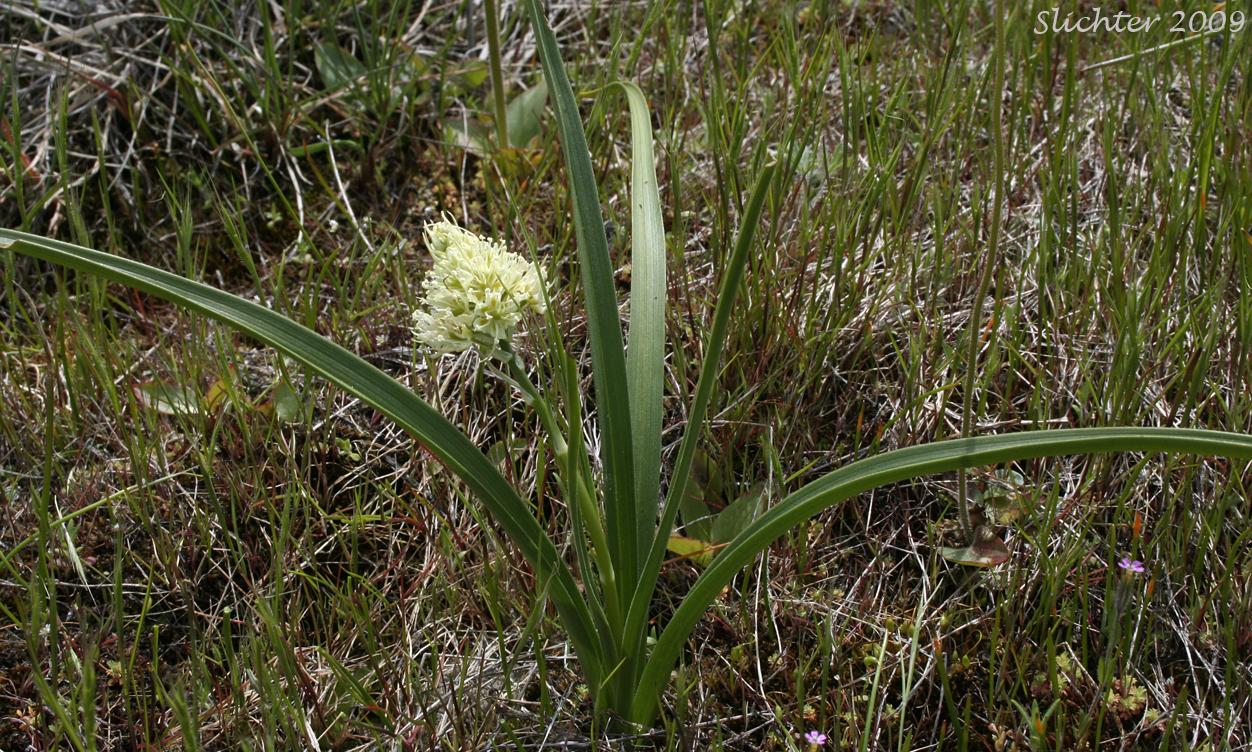 -
- 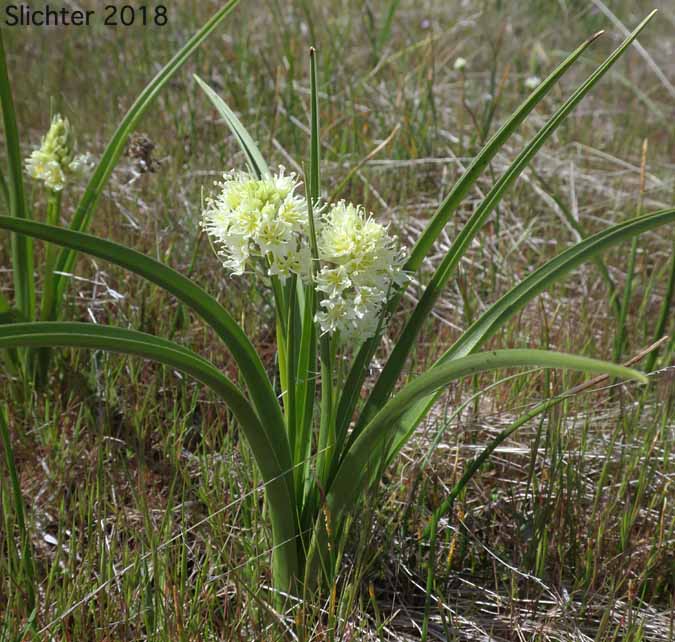
Meadow death camas seen at left along with midget phlox (Microsteris gracilis) on open slopes at Catherine Creek in the Columbia River Gorge.........April 9, 2009. The photo at right shows meadow deathcamas in bloom at Catherine Creek, Columbia River Gorge.......March 25, 2018.
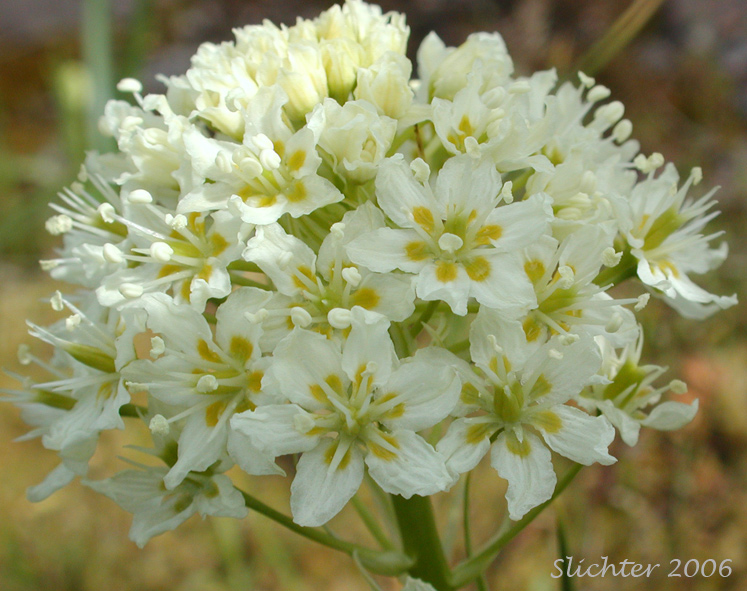 -
- 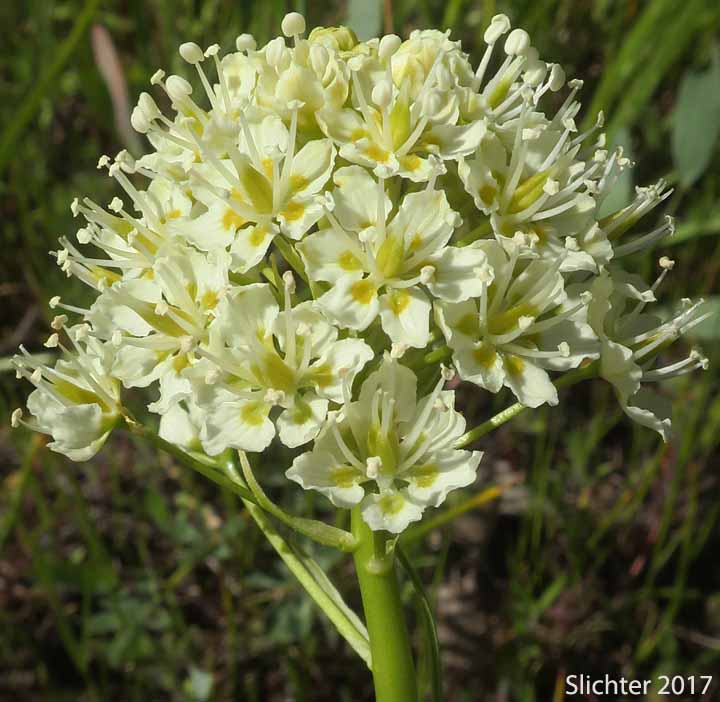
The photo at left shows a close-up of the attractive,
short raceme of meadow death camas as seen at Catherine Creek, Columbia River
Gorge...........April 9, 2006. The photo at right shows a close-up of the inflorescence of meadow death camas as seen in vernally moist swales between Little Bowman and Canyon Creeks in the Klickitat Wildlife Area.........May 17, 2017.
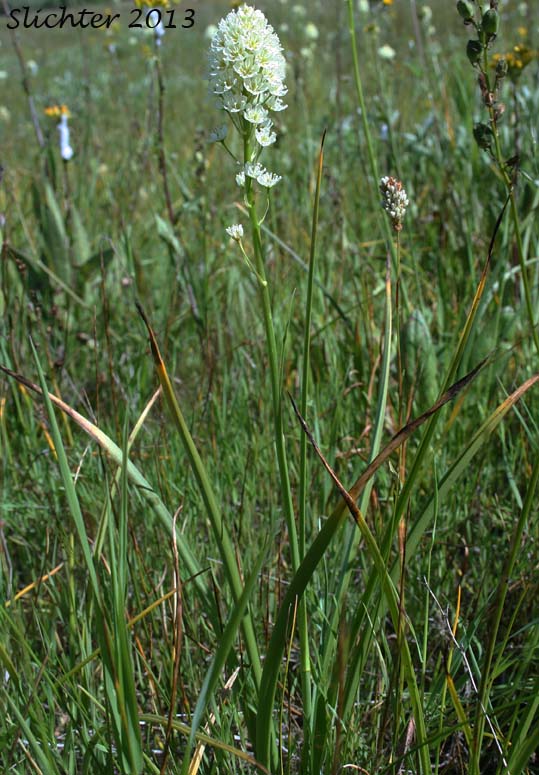 -
-  -
- 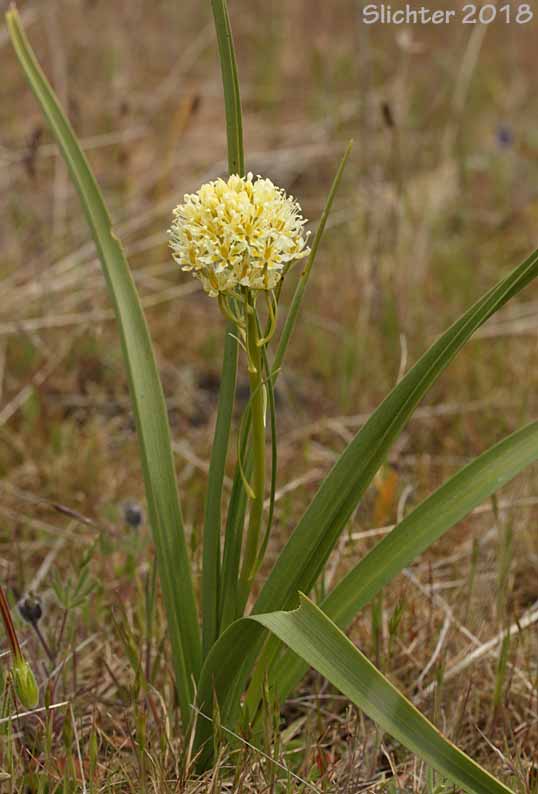
Meadow camas as seen at left and center in vernally inundated meadows at Panakanic in western Klickitat County.........June 17, 2013. The photo at right shows meadow camas in bloom in vernally moist grasslands adjacent to the parking lot at Catherine Creek, Columbia River Gorge......April 3, 2018.
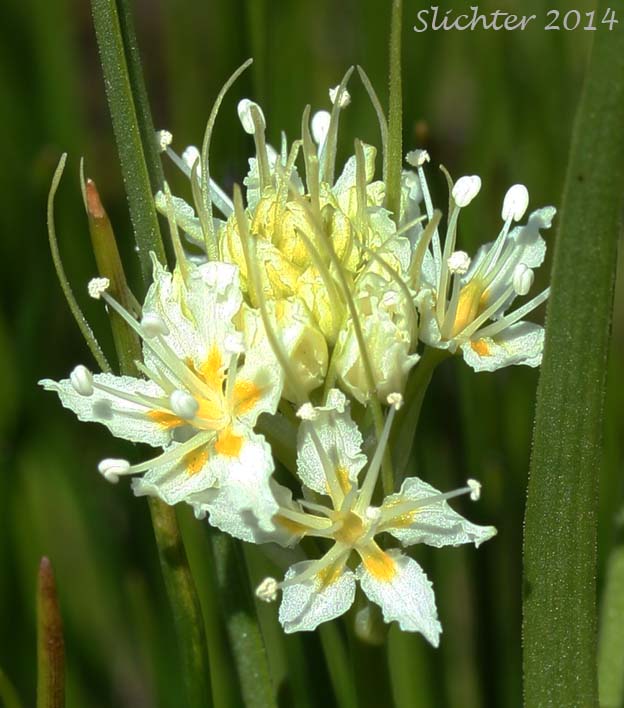 -
-  -
- 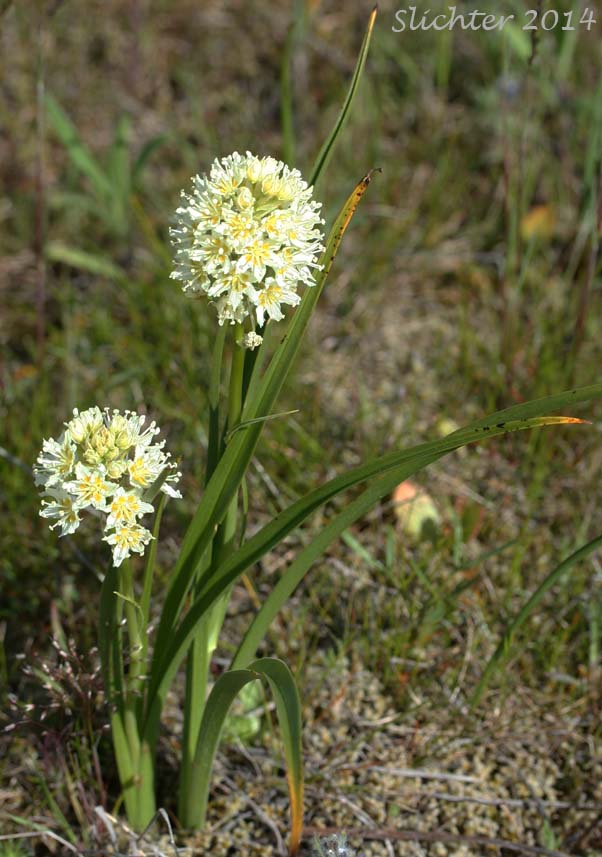
The photo at left shows a close-up of the inflorescence of meadow deathcamas as seen along Minor Creek at the east side of the Catherine Creek Area, April 2, 2014. The photos at center and right were taken adjacent to the parking area at Catherine Creek on April 8, 2014.
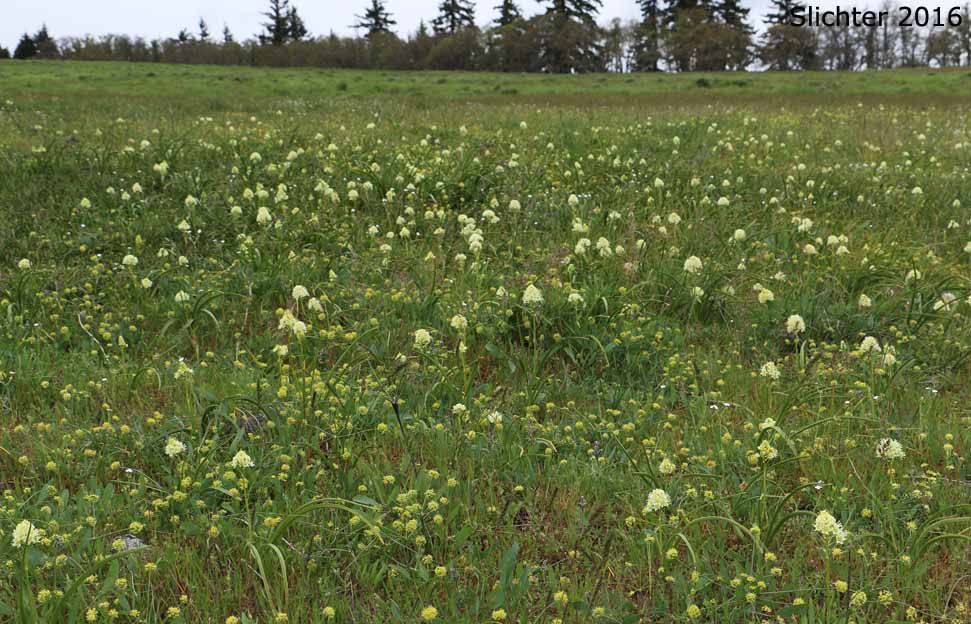 -
- 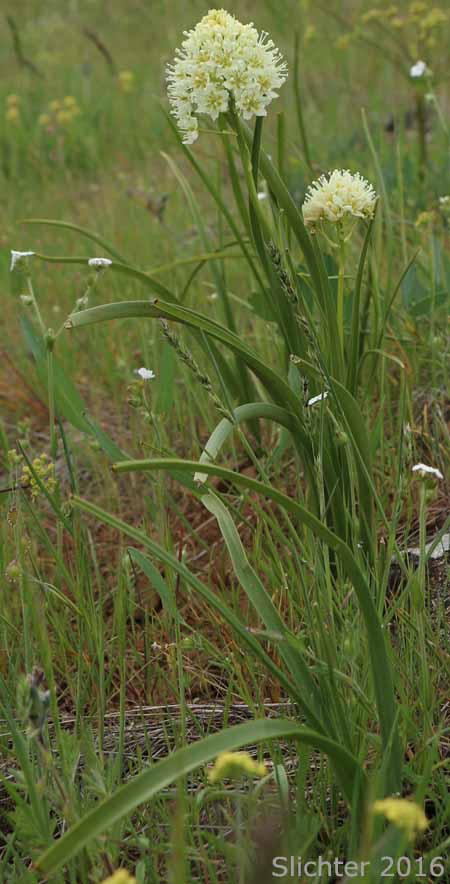
Meadow deathcamas as seen at Catherine Creek..........April 13, 2016.
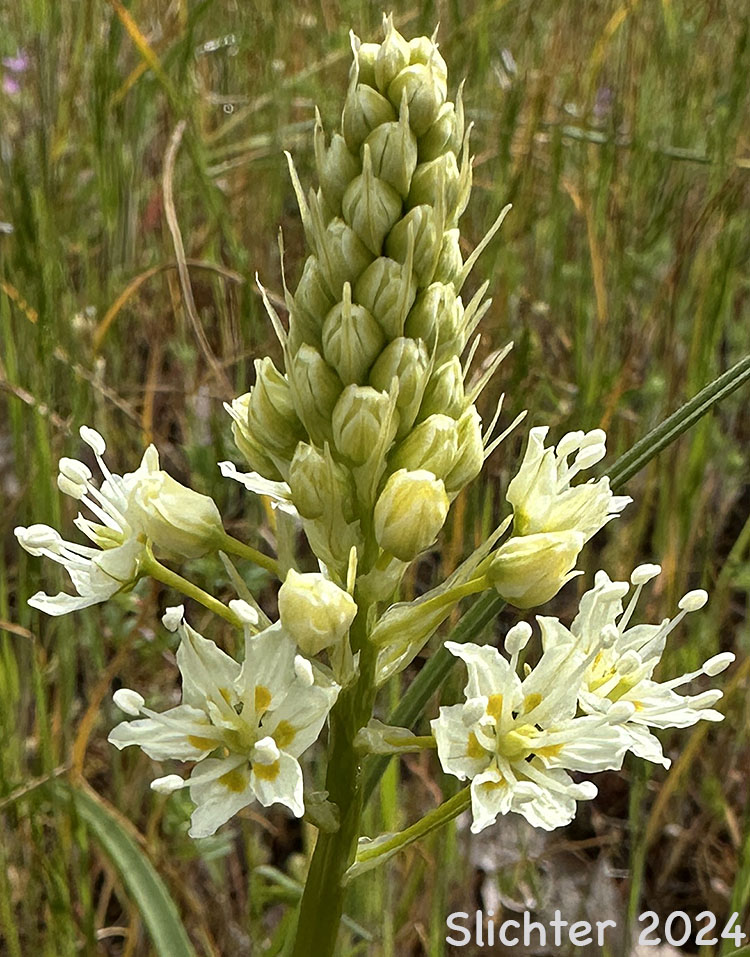 -
- 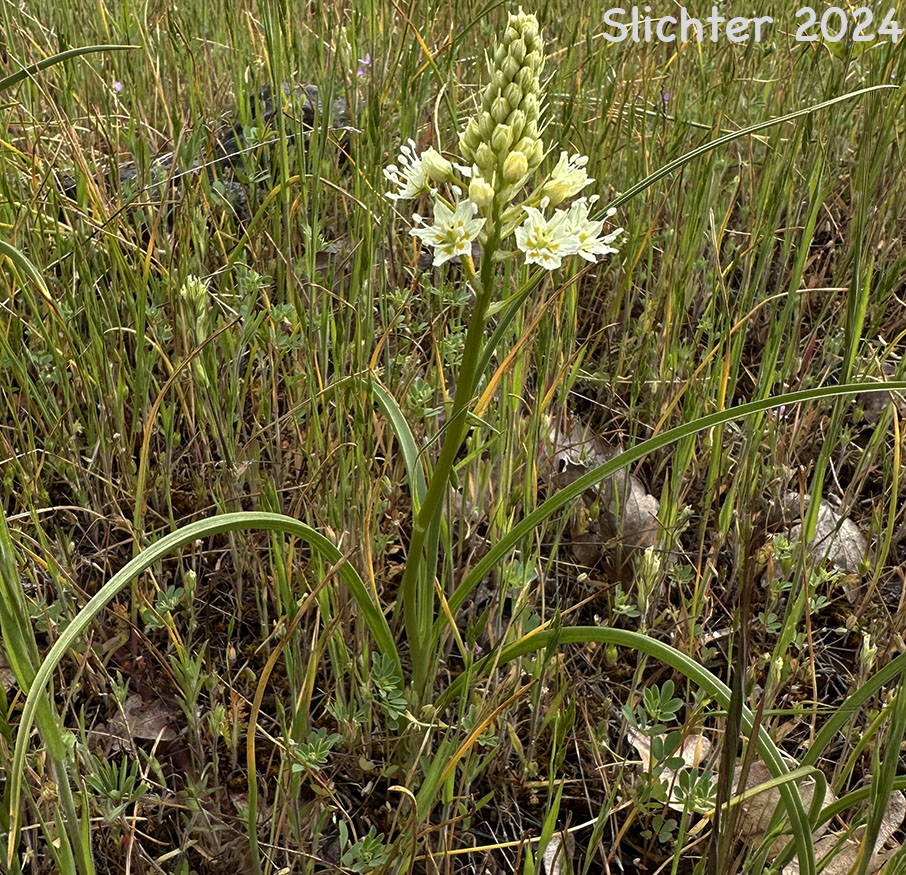
Meadow deathcamas observed along the Weldon Wagon Road Trail, Klickitat County, WA.....April 28, 2024.
 -
- 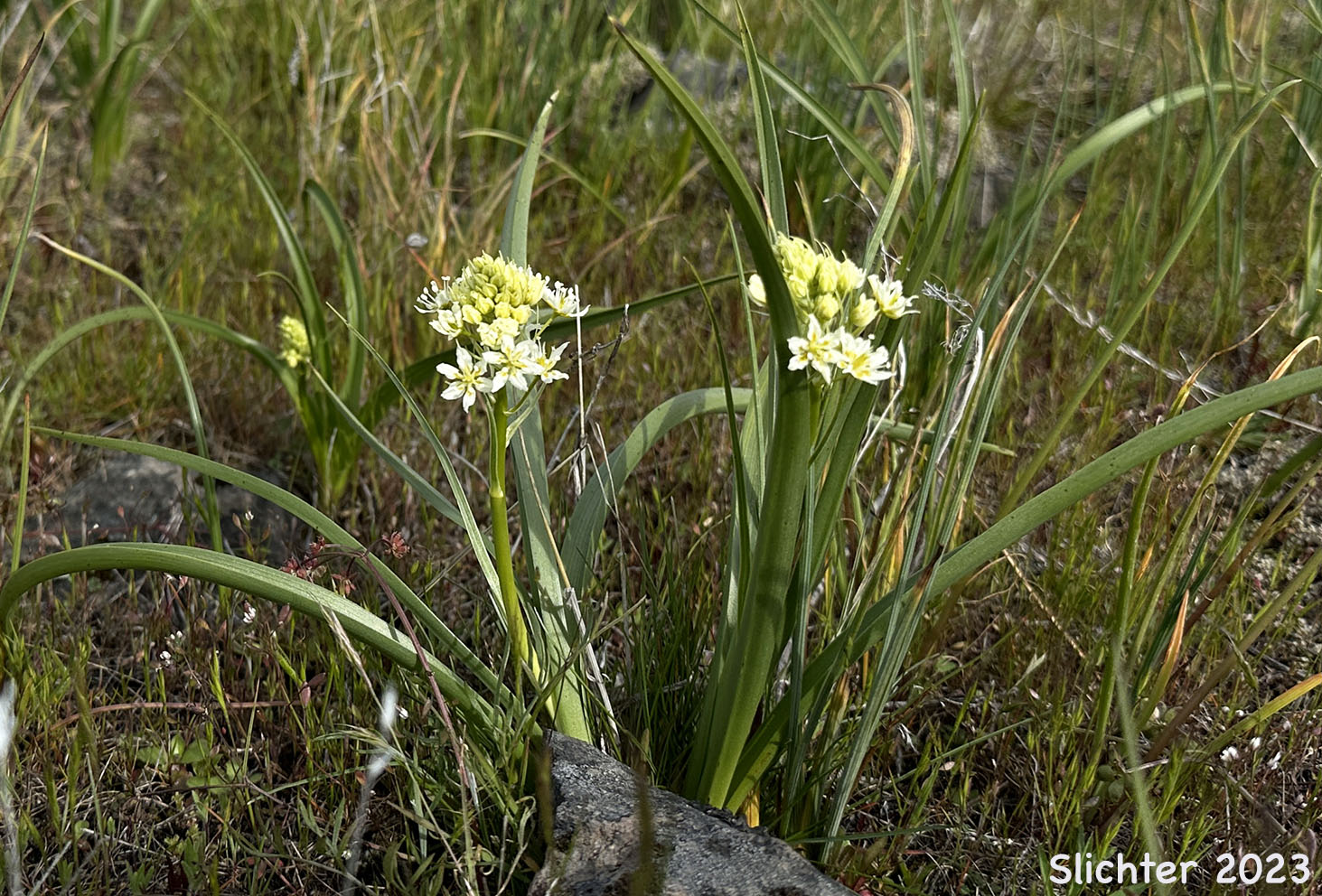
Meadow
deathcamas beginning to bloom at left on vernally moist slopes at Catherine Creek, Columbia River Gorge..........March 17, 2021. Meadow deathcamas at right blooming near the trailhead parking area at Catherine Creek, Columbia River Gorge National Scenic Area......April 15, 2023.
Paul Slichter
 Photo at right of Zigadenus
venenosus var. venenosus at Catherine Creek, Columbia River Gorge.....April 27, 1997.
Photo at right of Zigadenus
venenosus var. venenosus at Catherine Creek, Columbia River Gorge.....April 27, 1997.